I’ve heard it said that Florence is not an ideal destination for kids, but I couldn’t disagree more. Our three days in Florence were among our best in Europe. Even with only a basic education in Renaissance art, which Florence is known for, we found plenty to do in this charming and picturesque Tuscan city. For us, the key to enjoying Florence with kids was to temper museum visits with lots of eating and shopping through the many street markets and artisan shops.
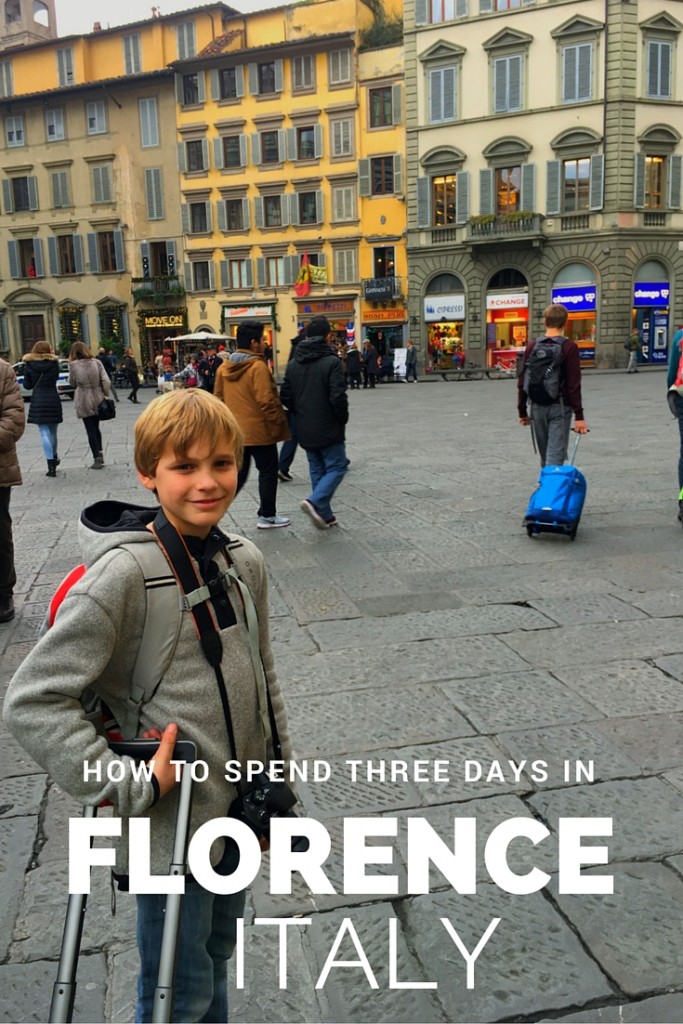
Florence is a very walkable town. Even from the main train station, Santa Maria Novella, families can easily walk into the city center in ten minutes. During our entire stay, we never needed any sort of transportation. After a fun but busy week in Paris, this fact alone set the relaxed tone for our stay. Right away, we noted that wherever we walked, we found beautiful alleys, shops, and art to peruse.
Florence is filled with historical sites and museums, most of which can be accessed on walking tours of the city with outdoor sculptures, exterior architecture, and free-entry churches. In fact, we only went in to three museums during our stay. Here’s how we spent three days in Florence with kids:
Day 1: David and Duomo
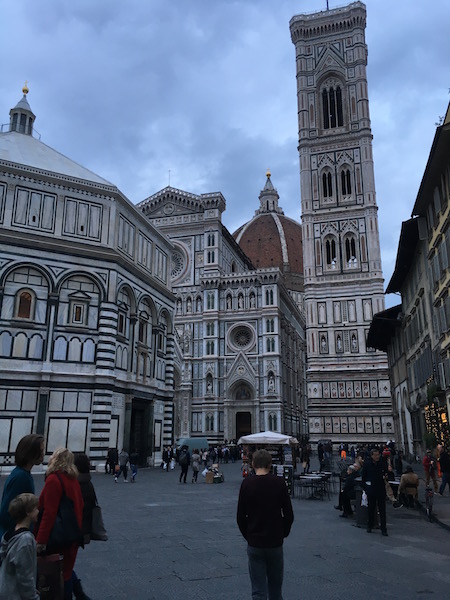
Florence is home to two major museums for Renaissance art: the Uffizi Gallery and the Accedemia. Most people would consider the Uffizi a must-do, and I don’t disagree…but with three kids who have not studied Renaissance art, we did the unthinkable: we skipped it. Instead, we went directly the the Accedemia to see Michelangelo’s David. This is a sculpture we DID study beforehand, and it did wow us. The Accedemia is not so big as to be overwhelming; it was easy to quickly find the David and the few other pieces of art we knew we wanted to see. These included the Prisoners and the hall of musical history, with wonderful instruments from various centuries. We spent only an hour and a half in the Accedemia, which may be considered a crime, but worked well for us.
We bought our tickets online ahead of time, which allowed us to skip the long ling out front. Instead, we only needed to go to the ‘advance ticket’ booth across the street from the entrance, where they printed out our tickets by reservation number. These are timed tickets, and we opted for mid-morning.
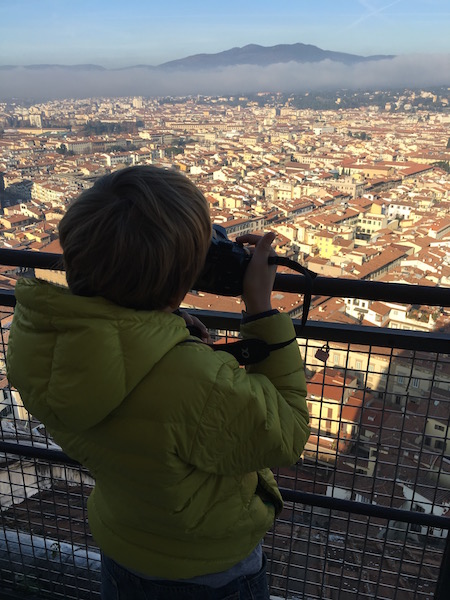
Note: if you have tall teens, have them bring an ID to guarantee them their free entry. Kids 18 and under are free, but apparently our 16-year-old looks older than he is.
The Accedemia is a short, direct walk to the Duomo, Florence’s crown jewel. This dome is an architectural wonder, and kids love it. On the five minute walk, stop for sandwiches at the take-out window en route. There’s a small grocery store nearby with very affordable water bottles and juice. At the Duomo, the combined ticket gets families into the dome, the museum, and the camponile for about €12 a ticket. Entry to the cathedral is free. Teens pay full price; kids 12 and under are half price. It’s also possible to get a ticket for just the dome, though we recommend seeing it all, especially if you’re doing only a few paid museum visits.
Note: We bought tickets for the Duomo first thing in the morning, on our walk over to the Accedemia. The line for tickets is shorter at this time. You can buy tickets in either the main ticket line or at the campanile. Opt for the latter. When you return, you’ll still wait in a line to go up the campanile and the dome, but others will be waiting in both these lines AND the ticketing line.
The line to go up into the dome gets long, but it moves fast. It’s a very interesting visit. First you go up a narrow, spiraling staircase, which spits you out on a balcony overlooking the interior of the lower dome. From here, you can look down at the cathedral interior, and up at the frescos on the dome. You’re moved along at a steady pace to another series of staircases to the upper dome area. This time, you’re in the unadorned interior of the outer dome. Imagine two layers of dome, with you sandwiched between. It’s not that claustrophobic, but close. This is a great place to note how the dome’s architect, Filippo Brunelleschi, constructed this masterpiece (he was inspired by Rome’s Pantheon dome). Finally, a final, steep, and narrow staircase takes you to the very top, where you’re deposited outside the tip of the dome for amazing city views.
Expect to feel the crush of humanity on this visit: while in a line, there are several places along the route where the people going up meet with the people going down, with only minimal crowd control by Duomo staff. There are quite a few moments of squeezing past people and letting others pass. If you’re tall, watch your head on the low ceilings. Consider not bringing a backpack, as the extra width will make it hard to navigate the stairs.
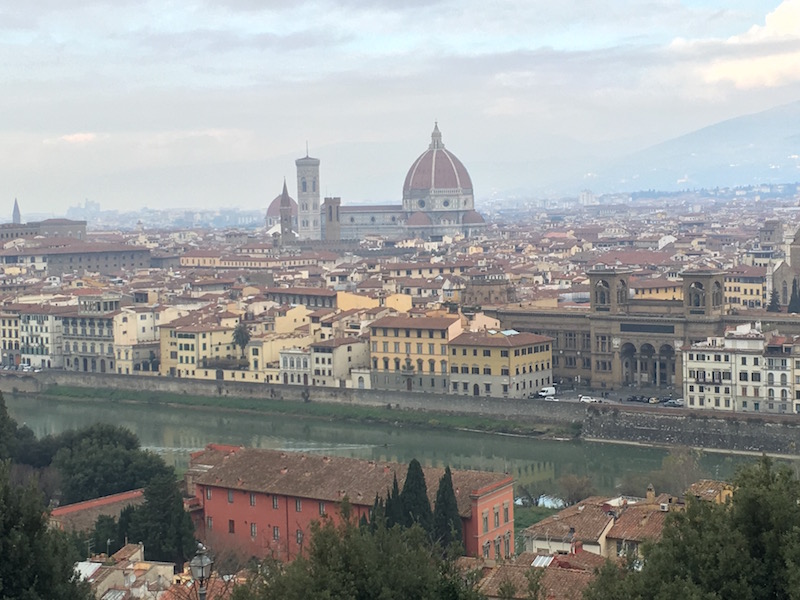
On the route back down, you’ll get the chance to stop at the upper interior dome balcony, where you can practically (but not quite) touch the frescos on the ceiling. It’s truly an amazing visit.
Note: There are over 400 steps on the accent, so bear this in mind. However, anyone of reasonable health and fitness can do it: the line of people move steadily but slowly.
After visiting the dome, you’ll probably need a break from stairs before tackling the campanile. Visit the museum, which rarely has a line at all. Here, you’ll see a life-size model of the front of the Duomo from the years before it was ‘re-modeled’ during the Renaissance, plus several levels of fascinating art and artifacts. Kids and teens will be especially interested in the collection of church relics on the ground floor. They include bones from the likes of John the Baptist and several saints. Young kids may be creeped out, as some bones are very recognizable as human, such as jawbones embedded in gold and jewels. We spent about an hour in this museum, but you could easily spend longer.
Day 2: Oltrarno walk and Da Vinci
We spread out our museum visits, which meant we saved the fun Da Vinci museum for Day 2. There are actually two ‘campuses’ of this museum in Florence, and according to our guide books, they are quite similar…if you go to one, there’s no need to go to the other. There’s a flat entry rate for families (I believe it was €20), or you can opt to pay a la carte if you have younger kids (kids 12 and under are half price). The Da Vinci Museum is completely self-guided, and consists of a large collection of to-scale models of Da Vinci’s many inventions. The best part: it’s hands on. Kids can pull levers, move wheels, and push and pull things to see how Leonardo’s many contraptions worked. It’s fascinating for adults too: it was amazing to see how far ahead of his time Da Vinci was thinking. We saw his model for an odometer, a tank, a humidity tester, and so many, many more. His flying contraptions were there, as well as his anatomical sketches and replicas of his paintings, so kids could compare his artwork to his inventions and learn how he studied anatomy in an era when it was illegal to study cadavers.
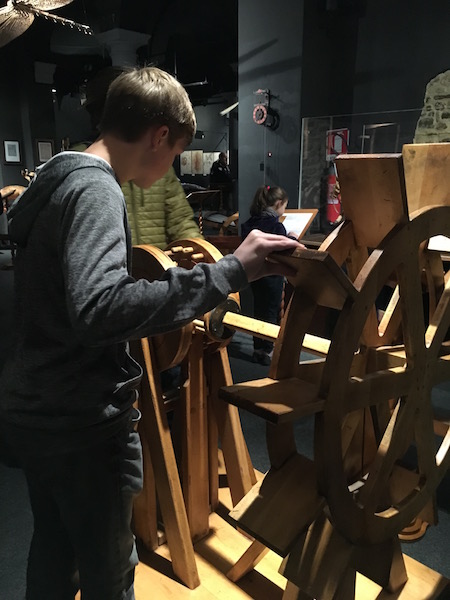
Note: If you have energy for another museum, the Galileo Museum is adjacent to the Uffizi and has Galileo’s actual telescopes (as well as his finger, interestingly enough).
After a morning of museum visits, we had had enough. We opted for a walking tour through the afternoon. From the Galileo, we started outside the Uffizi, where families can see many sculptures outside in the courtyard. Then we crossed the Ponte Vecchio bridge (checking out the jewelry vendors while walking over) to the Oltrarno neighborhood. Oltrarno simply means ‘on the other side of the Arno’, and is much quieter and, in our opinion, less touristy than the Duomo side. This is where the many artisans of Florence have their shops, which you can peek into as you explore the narrow streets here. From the bridge, continue straight to the Pitti Palace. This imposing palace was home to the famous Medici family for generations. You can go inside, but we’re done with art for a bit, right?

Instead, we continued, turning right down more artisan streets, exploring as we happened upon smaller piazzas and churches. Our favorites were in Santo Spirito. Eventually, we turned right again to find the river. As long as you always know where the Arno is, you can’t really get too lost. Once back near the Ponte Vecchio, head east along the Oltrarno side until you see the city wall and the stairs to climb to Michelangelo piazza, for great city views, vendors, and of course, another church.
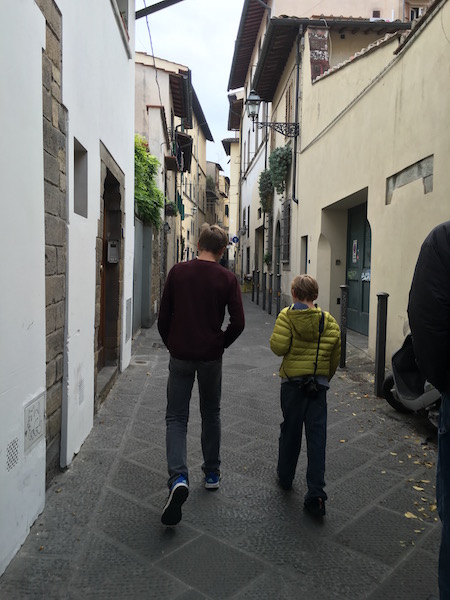
After this long walk, we spent the rest of the day letting the kids wander at will, looking around the shops near the Ponte Vecchio. In this area, you’ll find lots of osterias (wine bars), cheese and meat shops (most with generous sampling), and leather shops. There are also many vendors selling trinkets, puppets, wool scarves, and the like.
Day 3: San Lorenzo and Mercado Centrale
North of the Ponte Vecchio and Duomo, the Mercado Centrale is Florence’s foodie market, housed in a big warehouse building full of light and windows. Several stories tall, this market is very fun to peruse; if you have time, pick out picnic supplies for a lunch outside. Next to Mercado Centrale is the San Lorenzo market, which is an open-air market of leather goods. Each stall entices with the smell of leather and the rich, bright colors of Florentine belts, wallets, journals, and more. This is where to spend those euros on souvenirs.
Where to stay in Florence with kids:
While we were in Florence, I didn’t see a bad place to stay, but we loved our location, just on the Oltrarno side of the Ponte Vecchio. We rented an apartment from AirBnb, and had beds for five, plus a living space and kitchen and large bathroom for less than €100 per night. Our place was located just above a pottery shop, and was very peaceful and quiet while still only steps from the action. For a link to the exact apartment we rented, check out this post on renting AirBnb in Italy.
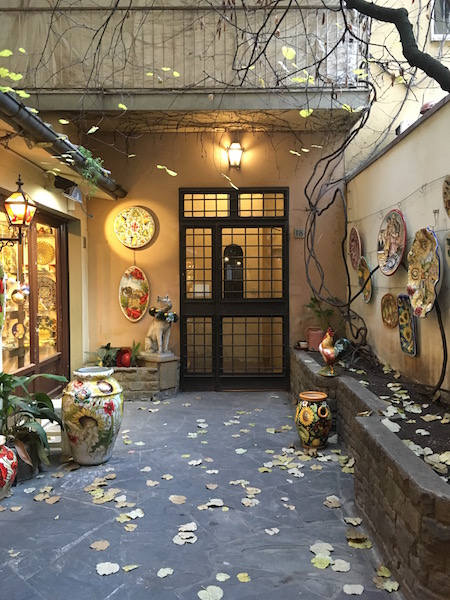
Where to eat:
Again, you can’t go wrong. We ate all over the city, but focused our attention on the Oltrarno. By Santo Spirito, we liked Borgo Antico, and right near the bridge, we loved Celestino, where the staff was especially warm and welcoming. By the Duomo, the Black Bar was our go-to place for gelato, and Osteria dei Pazzi was recommended to us for dinner. There’s also a grocery store by the bridge (one street into Oltrarno) with a nice cheese and meat counter and fresh pasta, for those with kitchens.
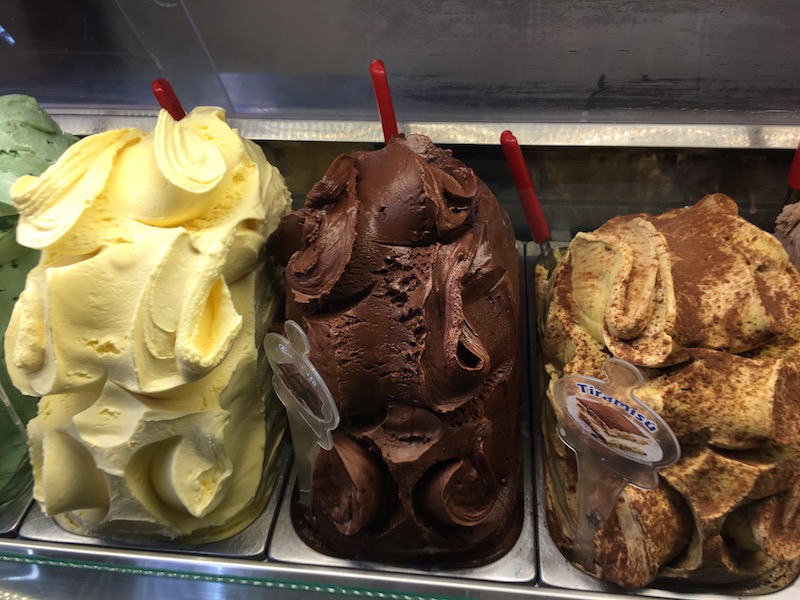
We only had one bad meal in Florence, right across from Pitti Palace at Bellini. Hopefully we just caught this restaurant on an off-night, but I’d skip it.
What’s your go-to activity in Florence?






